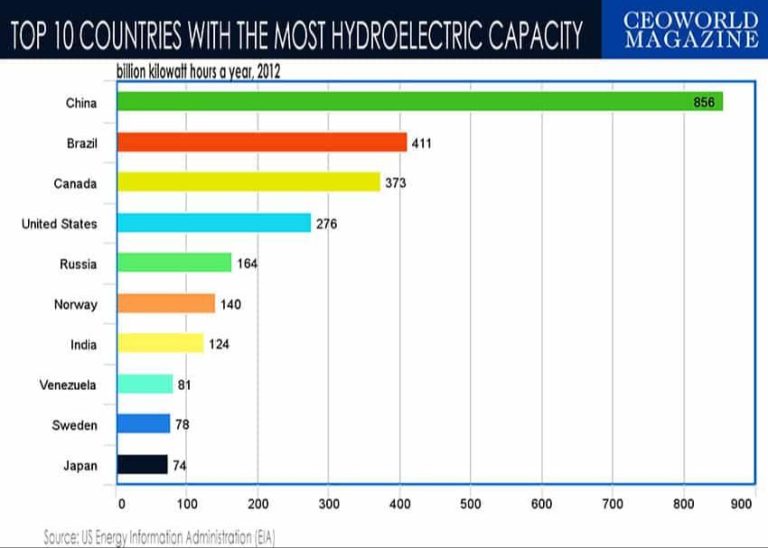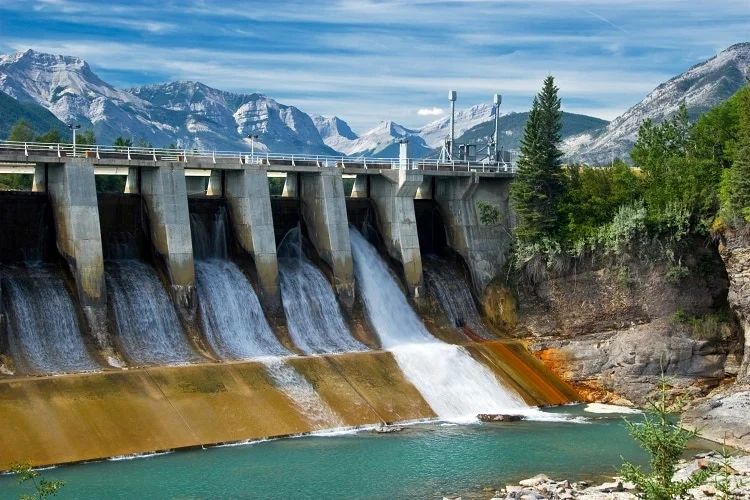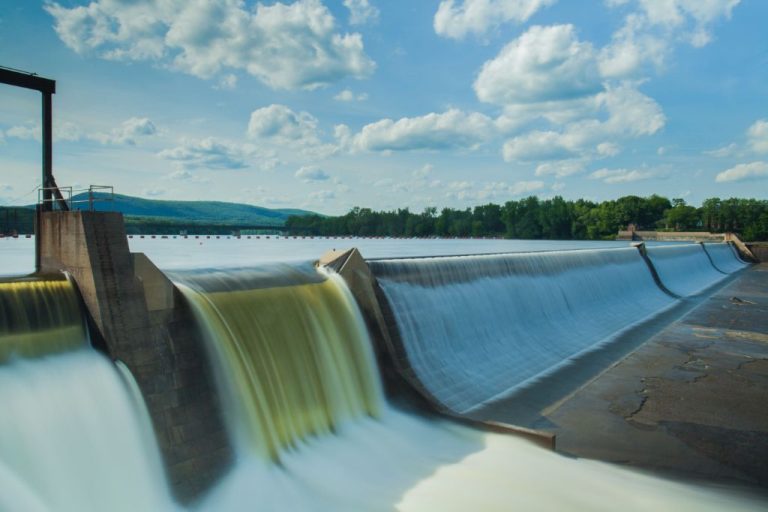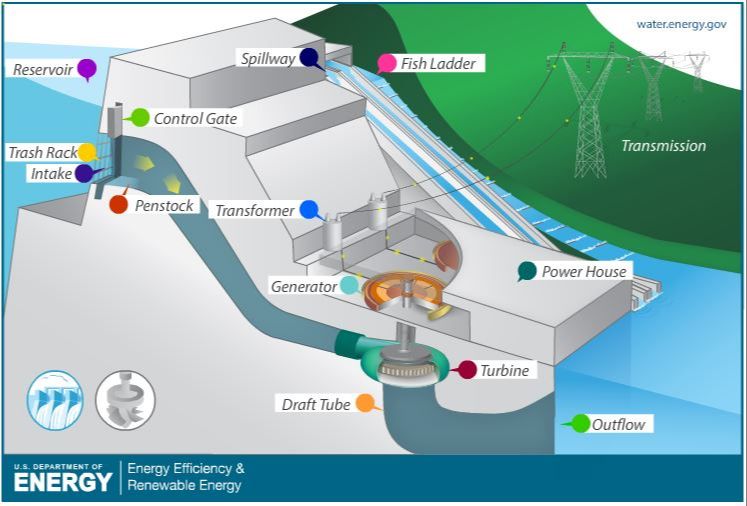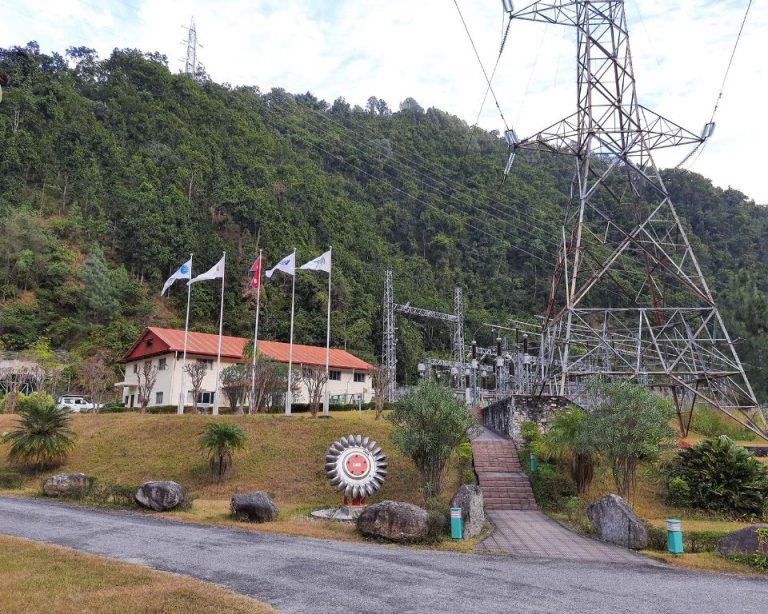Does Hydropower Involve Solar Energy?
What is Hydropower?
Hydropower is a renewable source of energy that uses the natural flow of water to generate electricity. The term hydropower refers to the process of harnessing the energy from flowing or falling water to produce power. Hydropower plants capture the energy of moving water to generate electricity.
Humans have been harnessing the power of water for thousands of years. The ancient Greeks used water wheels to grind wheat into flour over 2000 years ago. In the late 19th century, hydropower began being used to generate electricity. One of the first hydroelectric plants was built at Niagara Falls in 1879 (1). Since then, hydropower has grown to become one of the leading renewable sources of electricity production worldwide.
The main components of a hydropower plant include a dam, reservoir, penstock, turbine, and generator. The dam stores river water in the reservoir and controls its flow. The water is released from the reservoir through the penstock, which is a pipeline that leads to the turbine. As the water flows through the turbine, it causes the blades to rotate, driving the shaft connected to the generator. The generator then converts the mechanical energy into electrical energy (2). The electricity can be used immediately or transmitted via power lines to homes and businesses.
(1) https://www.energy.gov/eere/water/history-hydropower
(2) https://www.hydropower.org/iha/discover-history-of-hydropower
How Hydropower Plants Work
Hydropower plants convert the energy of flowing water into electricity using a process that involves three main components: a dam, a turbine, and a generator (Components of a Hydropower Plant – The Constructor).
The dam stores river water in a reservoir and controls its flow. The water in the reservoir has potential energy because of its height above the turbines. The intake structure regulates the amount of water released from the reservoir towards the turbines. This water flows through a penstock which is a sloped pipeline that leads to the hydraulic turbine.
The force of the moving water makes the turbine spin. The turbine is connected to a shaft that rotates when the turbine spins. The shaft is connected to a generator which converts the mechanical energy from the spinning turbine into electrical energy using electromagnetic induction. The electricity generated can then be transported via transmission lines to homes and businesses (How Hydropower Plants Work – HowStuffWorks).
Therefore, hydropower plants use dams to control water flow from a river which is converted to electricity via intake structures, turbines, generators, and other equipment.
Advantages of Hydropower
Hydropower is an extremely beneficial source of renewable energy. It offers a number of advantages over fossil fuel-generated electricity:
Hydropower is a renewable energy source. Unlike fossil fuels, the water that drives hydroelectric generators will not run out. Rain and snow regenerate the water in hydroelectric dams over time, allowing the generation of electricity to continue indefinitely (https://www.energy.gov/eere/water/benefits-hydropower).
Hydropower is reliable and flexible. Hydroelectric plants can generate power on demand to meet peak load demands. The flow of water can be controlled through the dam to rapidly adjust to changes in electricity demand (https://www.enelgreenpower.com/learning-hub/renewable-energies/hydroelectric-energy/advantages).
Hydropower has low operating costs. Once a hydroelectric dam and power plant is built, it has relatively low maintenance and operational costs compared to other types of power plants. Fuel costs are essentially zero, since no fuel is needed to generate electricity from flowing water.
Disadvantages of Hydropower
While hydropower is a renewable source of electricity, it does come with some disadvantages that should be considered. Two of the main downsides are the high upfront costs and the potential impact on rivers and wildlife.
Constructing a hydroelectric dam and power plant requires a huge initial investment. For example, the cost of the Three Gorges Dam in China was over $60 billion (Source). These facilities also take many years to build. The costs and time required make hydropower less feasible in some situations.
Dams built for hydropower can significantly alter river ecosystems. The dam walls prevent fish migration and affect water quality and flow (Source). Reservoirs created by the dams flood habitats and disrupt wildlife. Studies show hydroelectric dams reduce biodiversity and increase species extinction risk.
Hydropower and Solar Energy
Solar energy is radiation from the sun that can produce heat, generate electricity, and cause chemical reactions (Britannica). Solar energy technologies like solar photovoltaics (solar PV) and concentrated solar power directly convert sunlight into useful forms of energy. However, hydropower does not directly use solar energy.
While hydropower utilizes the energy from flowing water to generate electricity, the solar energy is not directly converted. The sun’s radiation causes water on the earth’s surface to evaporate and form clouds. This water later falls as rain and snow and flows through rivers and streams (SEIA). Hydropower captures the kinetic energy of this flowing water to turn turbines and generate electricity. So while solar energy plays an indirect role in the water cycle that feeds hydropower generation, hydropower does not directly convert solar radiation into electricity like solar PV or concentrated solar power.
Indirect Solar Influence on Hydropower
While hydropower does not directly utilize solar energy, the sun plays an important role in the hydrologic cycle that supplies water to hydropower facilities. The sun provides the energy that drives evaporation and transpiration, which causes water to evaporate from oceans, rivers, lakes, plants, and soil. This evaporated water eventually condenses into clouds and falls back to the surface as precipitation. More solar energy translates to higher evaporation and precipitation rates (https://serc.carleton.edu/eslabs/weather/2a.html).
The amount of evaporation and precipitation in a given region directly impacts the water flow available for hydropower generation. Sunnier regions with more solar radiation tend to have higher evaporation rates and therefore more precipitation. The solar-driven hydrologic cycle supplies a steady flow of water that can be harnessed and controlled at hydropower dams. While the sun does not directly power hydropower plants, it maintains the renewable supply of water that makes hydropower possible.
Hydropower vs. Solar PV
Hydropower and solar photovoltaics (PV) have very different capacity factors and costs. The capacity factor of hydropower plants typically ranges from 35-60%, meaning they produce electricity around 35-60% of the time. In contrast, solar PV plants have capacity factors of around 15-30% since they only produce when the sun is shining.
The levelized cost of electricity (LCOE) for hydropower plants ranges from $30-80 per MWh, making it one of the lowest-cost renewable energy sources. Solar PV costs have dropped dramatically but are still higher than hydropower at around $30-60 per MWh.
Because of their complementarity, hydropower and solar PV are often used together. For example, solar can provide power during the day when demand is high, while hydropower can provide flexible generation in the evening when solar production decreases but demand is still significant. Combining solar and hydropower can lead to a more reliable, lower-cost renewable electricity system.
Global Hydropower Production
According to Statista, hydropower generation worldwide in 2022 totaled 4,434 terawatt hours, with China leading global production with around 1,303 TWh generated. Other top producing countries include Brazil (362.82 TWh), Canada (377 TWh), and the United States (260 TWh) [1].
The top 15 countries that produce the most hydropower are China, Brazil, Canada, the United States, Russia, India, Norway, Japan, Turkey, Venezuela, Sweden, France, Colombia, Austria, and Malaysia. Together they account for over 80% of global installed hydroelectric capacity [2].
As of 2021, global installed hydroelectric capacity was approximately 1,308 GW, with the top five countries (China, Brazil, Canada, the U.S., and Russia) representing over 50% of the world’s installed capacity for hydroelectric power generation [3]. Hydropower remains an important renewable energy source globally, supplying over 16% of global electricity generation.
Future of Hydropower
Hydropower capacity is projected to grow significantly in the coming decade. According to the International Energy Agency (IEA), global hydropower capacity is forecast to increase by 17%, or 230 GW, between 2021 and 2030 1. The majority of growth is expected in emerging economies, especially Asia.
Technological innovations are also helping drive growth in the hydropower industry. Advances in turbine design, such as more efficient runners, allow modern hydropower plants to generate more electricity from the same amount of water flow 2. Pumped storage technology is improving as well, providing greater grid reliability and integration with variable renewables like solar and wind. New stream-flow forecasting tools help operators better manage reservoirs and dam operations.
The U.S. Department of Energy envisions great potential to upgrade existing hydropower infrastructure to boost output and flexibility. Over the next 15 years, upgrades to non-powered dams and existing hydropower projects could add up to 16 GW of new capacity in the United States 3. The future of hydropower looks bright, with growth expected globally and innovations to make the most of existing infrastructure.
Conclusion
In summary, hydropower plants harness the energy of flowing water to generate electricity. The source of this flowing water is snow and rainfall, which is part of the natural water cycle driven by the sun. While hydropower does not directly convert solar energy into electricity like solar PV systems, the sun’s energy is essential in creating the water cycle that makes hydropower possible.
So while hydropower does not technically use solar energy directly, it does depend on the sun’s radiation indirectly. The sun evaporates water, which forms clouds and leads to precipitation that feeds rivers and streams. This renewable water flow allows hydropower to produce clean electricity without direct greenhouse gas emissions.
Overall, hydropower leverages the water cycle, which is reliant on the sun’s energy. In that way, the sun enables the available hydropower potential on Earth. But unlike solar panels that convert sunlight into electricity, hydropower utilizes the movement of water to generate power.

